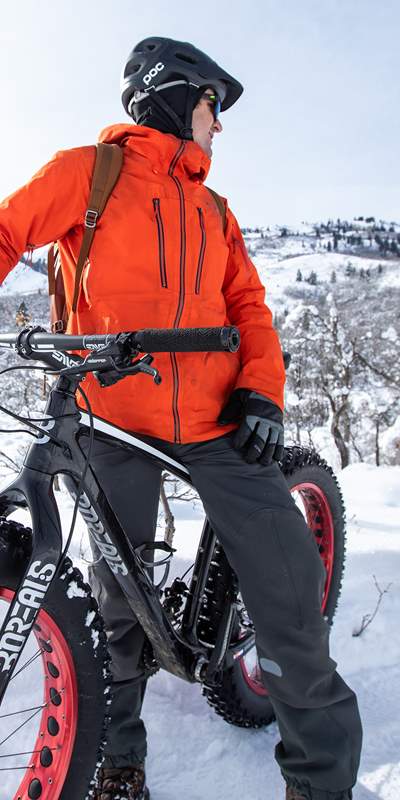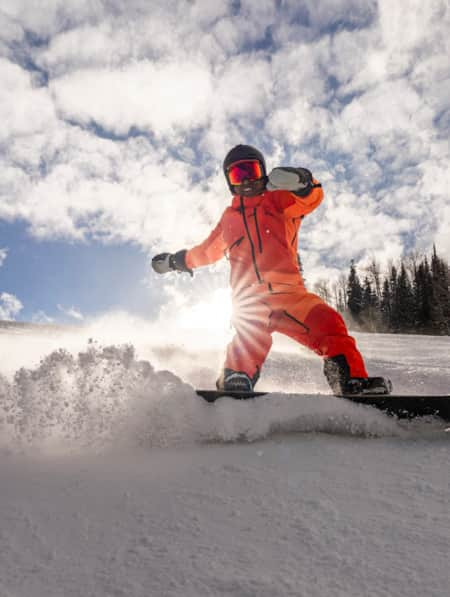
Fat tire biking at North Fork Park in Ogden.

Fat tire biking has become the latest rage among cycling enthusiasts and newbies
Ogden Area
-
Antelope Island State Park
Fat tire biking is fun, but you can even go looking for bison while riding at Antelope Island State Park. Most of the giant beasts have been corralled for winter, but fat tire bikers may spot one or two meandering along the banks of The Great Salt Lake. There are numerous trails throughout the park, almost all of which are open (but not groomed) for cyclists. The roads throughout the park are also excellent options for riders to enjoy the views and the wildlife. Warning: Do not approach or feed these large, fast, wild animals under any circumstances!
-
North Fork Park
North Fork Park is popular with cross-country skiers, fat tire bikers and even stargazers. Whatever your winter pursuit, Ogden Nordic maintains and grooms over 10 miles of well-marked trails through this park located in the bucolic Ogden Valley. Daily trail passes may be purchased online. Contact Diamond Peak for bike rental information.
Park City Area
-
Bonanza Flats
Newly-built Bonanza Flats is at the top of Empire Pass, providing great views of the entire area, but be prepared to walk/climb about a quarter-mile to get there. You will be rewarded! Starting near the Montage, walk/climb past the gate on Marsac to the trailhead. Note that parking is limited, especially on weekends.
-
Historic Rail Trail
In Park City, the Historic Rail Trail, a wide paved and gravel path, stretches 27 miles from White Pine Touring in Park City (6900’) to Echo Reservoir (5280’). Head out through town into scenic canyons. Just remember that you’ll be climbing, albeit gently, on the return. The Rail Trail also links to the trail system at Round Valley.
-
Round Valley
Round Valley provides miles and miles of interconnected trails for fat tire biking. This extensive trail system is also popular with hikers and cross-country skiers and is well-marked throughout. There are many entry points and options. For example, you can start at Quinn’s Trailhead, ride the road past the National Ability Center to Matt’s Flat, up to Seventy 101, PorcuClimb, Downward Dog (a downhill flow trail) and back to the road, or you can just take a simpler ride out and back.
Salt Lake City Area
-
Corner Canyon
Corner Canyon, Salt Lake City’s most-popular trail system, is popular with fat tire bikes, as well. Although the trails are not groomed, hikers and snowshoers tamp down many, making them a great option if you’re on the south end of the valley. Potato Hill instructional area is a great place to start. From there, Ann’s Trail is more challenging but, just halfway up at Ann’s Point, you’re high enough to view the entire valley as well as The Great Salt Lake in the distance.
-
Little Dell Reservoir at East Canyon
Little Dell Reservoir at East Canyon is perfect for beginners with a “false flat” climb from the parking lot at Little Dell Reservoir up the closed snow-packed and groomed road through East Canyon. Continue up the road as far as you want/can (it gets steeper after the first mile). If it hasn’t snowed in a few days, then return to the parking lot via the Lower Mormon Trail (starting from the outhouse on the East side about one mile up). This gentle but scenic shore trail is popular with hikers who kindly tamp it down for bikers to enjoy.
-
Millcreek Canyon
In Salt Lake City, Millcreek Canyon is a stunning out-and-back fat tire ride up the closed snow-packed and groomed road from milepost 4 to the end at Big Water Yurt (coveted reservations required for overnight stay). Be prepared to share the trail with cross-country skiers and very happy doggies until Elbow Fork, where the traffic diminishes as well as the grade.











